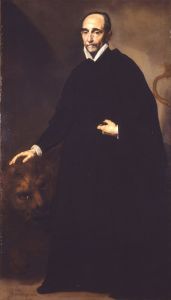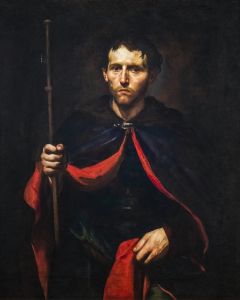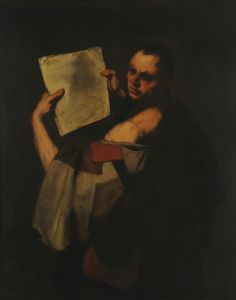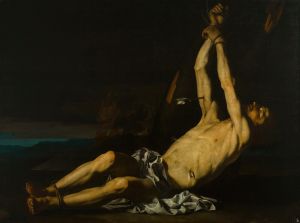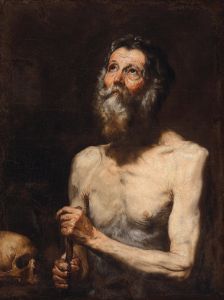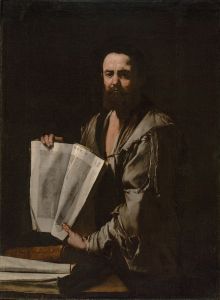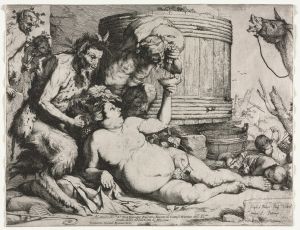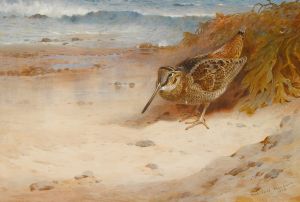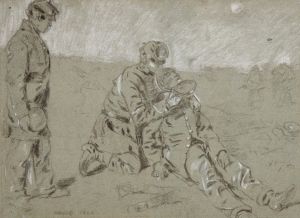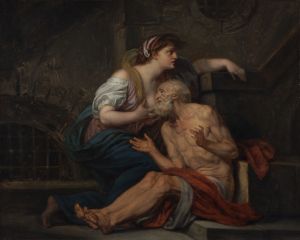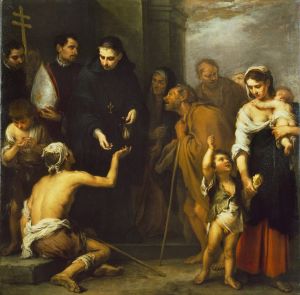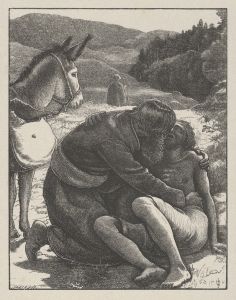
A Man Leading a Blind Friar
A hand-painted replica of Jusepe de Ribera’s masterpiece A Man Leading a Blind Friar, meticulously crafted by professional artists to capture the true essence of the original. Each piece is created with museum-quality canvas and rare mineral pigments, carefully painted by experienced artists with delicate brushstrokes and rich, layered colors to perfectly recreate the texture of the original artwork. Unlike machine-printed reproductions, this hand-painted version brings the painting to life, infused with the artist’s emotions and skill in every stroke. Whether for personal collection or home decoration, it instantly elevates the artistic atmosphere of any space.
Jusepe de Ribera, a prominent Spanish Baroque painter active primarily in Naples, is known for his dramatic use of chiaroscuro and his focus on intense emotional and physical realism. One of his works, A Man Leading a Blind Friar, exemplifies his mastery of these techniques. The painting is believed to have been created in the 17th century, during Ribera's mature period, when he was producing some of his most compelling and psychologically complex works.
The composition depicts two figures: a blind friar being led by a man. The friar, dressed in a simple robe, is portrayed with a sense of vulnerability, his sightless eyes and aged features rendered with meticulous detail. The man leading him, whose expression and posture suggest a mix of determination and care, holds the friar's hand firmly, guiding him forward. The interaction between the two figures conveys a poignant narrative of dependence, compassion, and human connection.
Ribera's use of light and shadow is particularly striking in this painting. The figures emerge from a dark background, illuminated by a dramatic light source that highlights their faces and hands. This technique, characteristic of the tenebrism style, enhances the emotional intensity of the scene and draws the viewer's attention to the central relationship between the two characters.
The painting reflects Ribera's interest in depicting the human condition, particularly themes of suffering, humility, and resilience. His works often focused on marginalized or vulnerable individuals, such as beggars, saints, and the elderly, portrayed with a sense of dignity and realism that was unusual for the time. This approach aligns with the broader Baroque interest in capturing the raw and often harsh realities of life.
While the exact circumstances of the painting's creation and its original patron remain unclear, A Man Leading a Blind Friar is consistent with Ribera's broader body of work, which frequently explored religious and moral themes. The painting is also notable for its psychological depth, as Ribera conveys the inner lives of his subjects through their expressions and gestures.
Today, A Man Leading a Blind Friar is recognized as an example of Ribera's skill in combining technical precision with profound emotional resonance. The painting is housed in a private collection, limiting its accessibility to the public, but it continues to be studied and appreciated by art historians and enthusiasts for its artistic and thematic significance.






